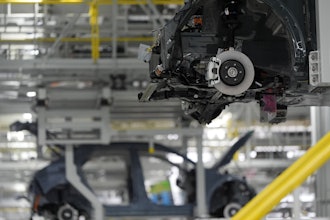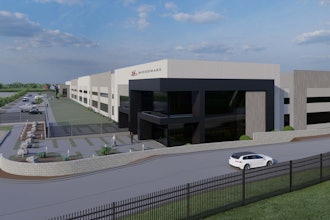By ALAN NICOL, Executive Member, AlanNicolSolutions LLC
This is part two of a two-part piece. Part one can be found here.
Coincidentally, my friend was telling me his story just after he and I had finished with my second example for discussion. It takes place in a small cafeteria-style kitchen. My friend and I had volunteered in the kitchen to help out the regular staff.
This lunch kitchen, which I have volunteered in many times, is a Lean expert’s nightmare. The food is ordered several days in advance, according to an anticipated customer demand and prepared, for the most part, in entirety prior to lunch service. Models of human behavior, particularly with regard to how many people will buy lunch on a given day, are nearly impossible to model with any reliability. Therefore, food is often thrown away, and sometimes one meal or another runs out before everyone has had a turn to get lunch.
The Lean solution would be to minimize the amount of food prepared at any given time, and to prepare and serve food to order. Food that was ordered into inventory and was not used should be used the next day and a minimum inventory for each service maintained on a daily basis. That would eliminate waste.
The Lean model could be done, and with a little head-scratching, I think I can even make it possible to do that without increasing the staff for the kitchen, though it’s unlikely. The equipment in the kitchen would need to be completely overhauled and changed, but such is not uncommon when redesigning a production line around a Lean model. I would not recommend even entertaining the idea, even if I could show a return on investment for the kitchen. Why wouldn’t I present a solution?
Let me share some basic data and see if you don’t see the answer without me stating it. The price for the standard lunch is $2.05. Yesterday, we served 256 lunches in 50 minutes. The normal staff is three employees: one operating the cash register, and two serving preset meals (four choices) and re-stocking the salad bar between waves of customers. That includes pulling more batches of prepared food from ovens, warmers and refrigerators, while rapidly serving up trays as fast as customers can select and grab one.
As I stated, customers arrive in waves, but if we distribute the pace, that’s roughly one customer served every 11.7 seconds. On some days, the throughput can be as high as 280 customers, on others, as low as 190, though it is usually between 220 and 250 roughly. The Lean process that we could all design to eliminate wasted food could not possibly provide that throughput with only one full-time and two part-time employees.
The cost of wasted food is far less than the expense of additional or alternative equipment, and more staff. To put a little bit of perspective on that statement, for special occasions, the kitchen will offer a greater meal, such as barbeque or Thanksgiving-style dinner. On those occasions, the kitchen will serve as many as 500 meals in around 65 minutes. To do that requires four employees and eight to 10 volunteers (12 to 14 operators), and six times the serving space and twice the food holding/stationing space and equipment.
If I haven’t dropped enough clues as to why the Lean methodology and focus on waste elimination isn’t the right solution, I’ll just say it. The kitchen and customers have only 65 minutes to serve and eat food in six different waves. On-time delivery is the driving need. The best solution for the challenge is the one that enables 280 customers to be served in 50 minutes. There isn’t time to allow customers to order and wait for food. The food must be waiting for the customer.
The challenge is to minimize the time the food waits so that it is as fresh and warm as possible. The kitchen does this very, very well, but at the expense of few options, and pre-staged (batch inventoried) production items.
I have no doubt that a Lean expert could come in and design a way to eliminate wasted food. Six Sigma experts could drive themselves nuts trying to address the variation in customer demand by figuring out the driving factors of customer decisions and mapping out meal selections that minimize demand variation (and would probably watch sales fall off as customers got bored with the same menu repeated over and over).
Neither of those methods, following their sets of rules, could produce a better solution for this kitchen than the one that they have, which breaks almost every Lean rule, and might not afford the changes in food that the Six Sigma solution would drive. Yes, I’ve tried to think of one, and after two years of volunteering regularly, have yet to devise a practical one. It’s not easy to get two servers and one cashier to serve four meal choices every 11 seconds.
If the reader is experienced in Lean or Six Sigma, then I will admit one concession to put the reader’s mind at ease. When we apply the Lean or Six Sigma methods to the customer process of selecting and paying for lunch, and not to the kitchen’s process of preparing lunch, then we design exactly the process the kitchen has. If we focus the method on the primary need, minimizing the customer’s time in process in this case, the methods work and we don’t need to break the rules.
Until I made the concession, I bet most of us all agreed that the solution did break the rules. It’s a fine point, and we can choose either side of the argument we prefer. Either way, these examples give us some easy things to look for to know when we need to either break the rules, or differently focus our methods.
The most obvious is when we try using the rules and they don’t work. We apply the rules and come up with performance measures going in the wrong direction. That’s a clue that we have either a problem outside of the normal rule purview, or we didn’t focus on the right problem. I warn us though; if our metrics are also not focused on the correct problem we might improve our metric, believing we have made things better, when actually we did not.
The second thing to look for is the people-dependent performance. In my experience, when productivity and performance hinges significantly on the performance of people, the purely logical and mathematical process models will lie. Instead, make it a habit to challenge those models with experiments that address the people’s needs more than the apparent process needs to see if addressing those doesn’t improve efficiency.
The third thing to look for is to verify that the challenge involves the enemy of the methodology. For example, Lean’s enemy is waste. Six Sigma’s enemy is variation. Total Quality’s enemy is complacency and defective output. We have the wrong method for the problem if, we cannot solve it by eliminating that method’s enemy. In the kitchen example above, the enemy is not wasted food; at least that is not the enemy of the primary need.
Since the process is very good at meeting its primary need, eliminating waste or variation or defects may not be important. If we do decide to try to further reduce those costly elements, we must be sure that we do not jeopardize the primary performance, and we may need to break the rules to ensure the primary element’s performance is maintained. In this case, we must accept some thrown away food or defects in the form of customers who do not get their first choice of meals.
As you proceed to improve processes look for the human elements of the process that might not fit the normal rules, or conflicts between the process problem and your method’s enemy of focus. If those don’t warn you and you still end up with improvements that don’t work, consider that your improvement rules might not be suited to address that particular problem. Step back and see if by breaking those rules you can come up with a better solution.
Stay wise, friends.
To read part one of this two-part series, please click here. What’s your take? Please feel free to comment below! For more information, please visit www.bizwizwithin.com.


















